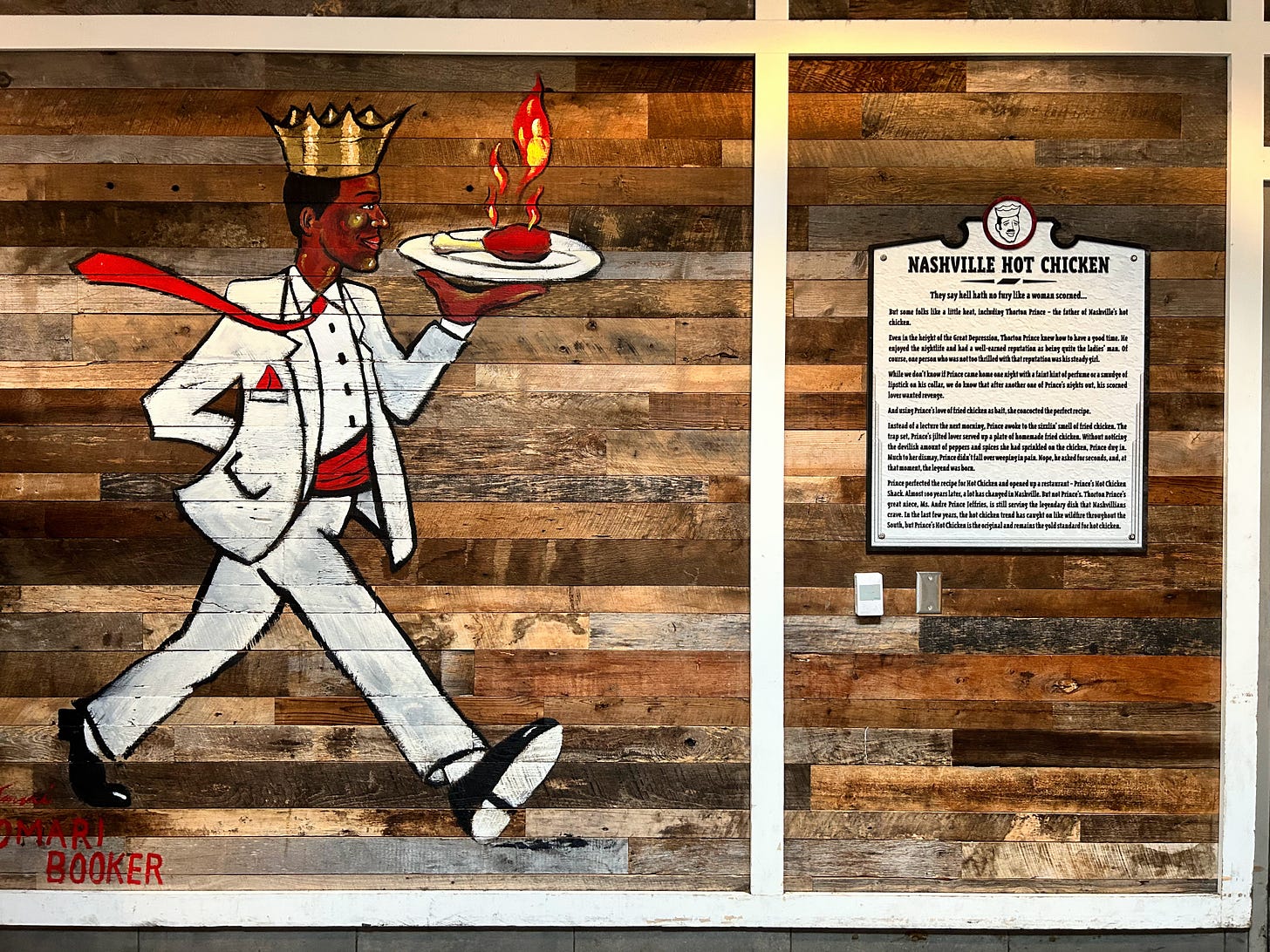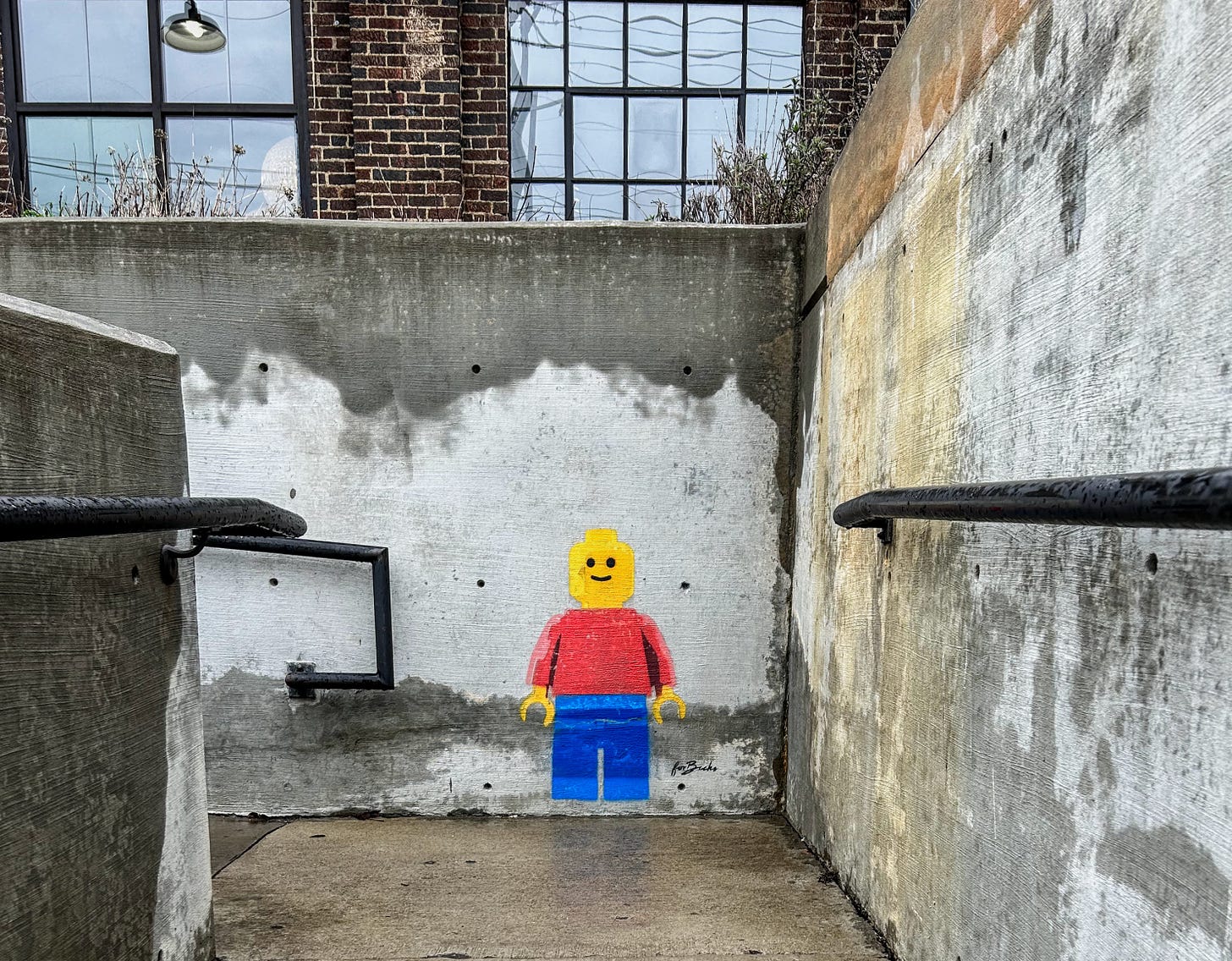Every trip to Nashville should start here
Here's where to learn the real history of country music (and hot chicken) in the Country Music Capital of the World.
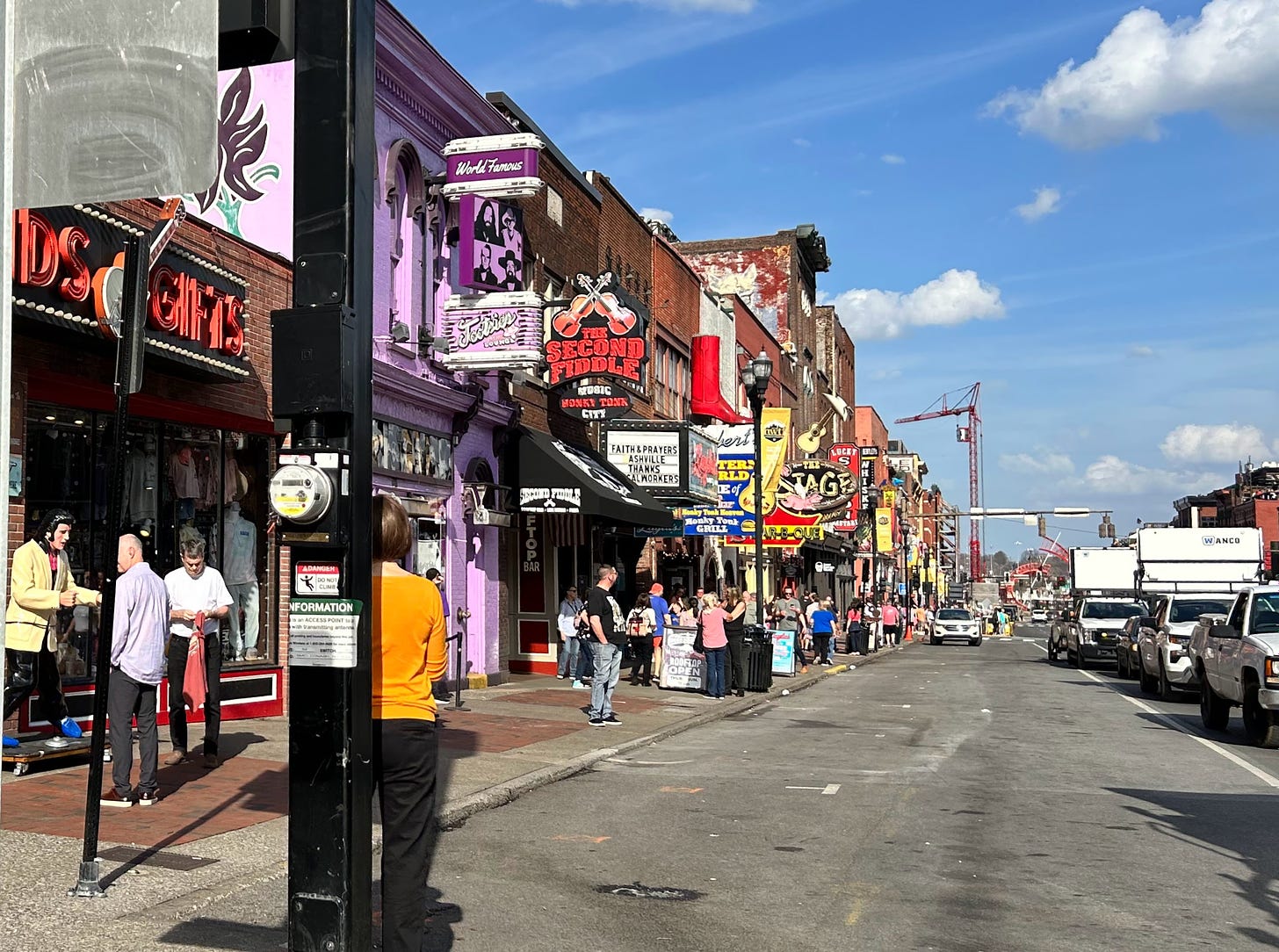
I’m back this week with a What to Do in Nashville post that I’ll publish in two parts.
This first installment touches on the very first things I think you should do when you get to Nashville, no questions asked. The second, coming next week, will cover some other restaurants and activities of note.
I’m going to make these posts free for all subscribers, but remember that paid subscribers will start getting a printed zine mailed to them twice a year, starting this summer. You aren’t going to want to miss it!
The Austin-Nashville comparisons are many, for good reason.
Both capital cities have a creative culture that comes from and fuels many of the local industries, particularly music, design, and technology. Both are booming bachelorette destinations and have very similar vibes in lots of the neighborhoods.
But Nashville is special in its own ways. The heart of Nashville’s tourist scene is Lower Broadway, a six-block section of downtown filled with four-story mega clubs owned by the likes of country stars Garth Brooks, Miranda Lambert, and Luke Bryan.
Some of the live music venues, like Robert’s Western World and Acme Feed and Seed, have kept their old school honky tonk vibe, not unlike the Little Longhorn Saloon or the Broken Spoke in Austin.
But its tourism industry has changed a lot in the past couple of years, especially since the opening of the National Museum of African American Music and the popularization of Nashville-style hot chicken.
Here’s why I think you should start there.
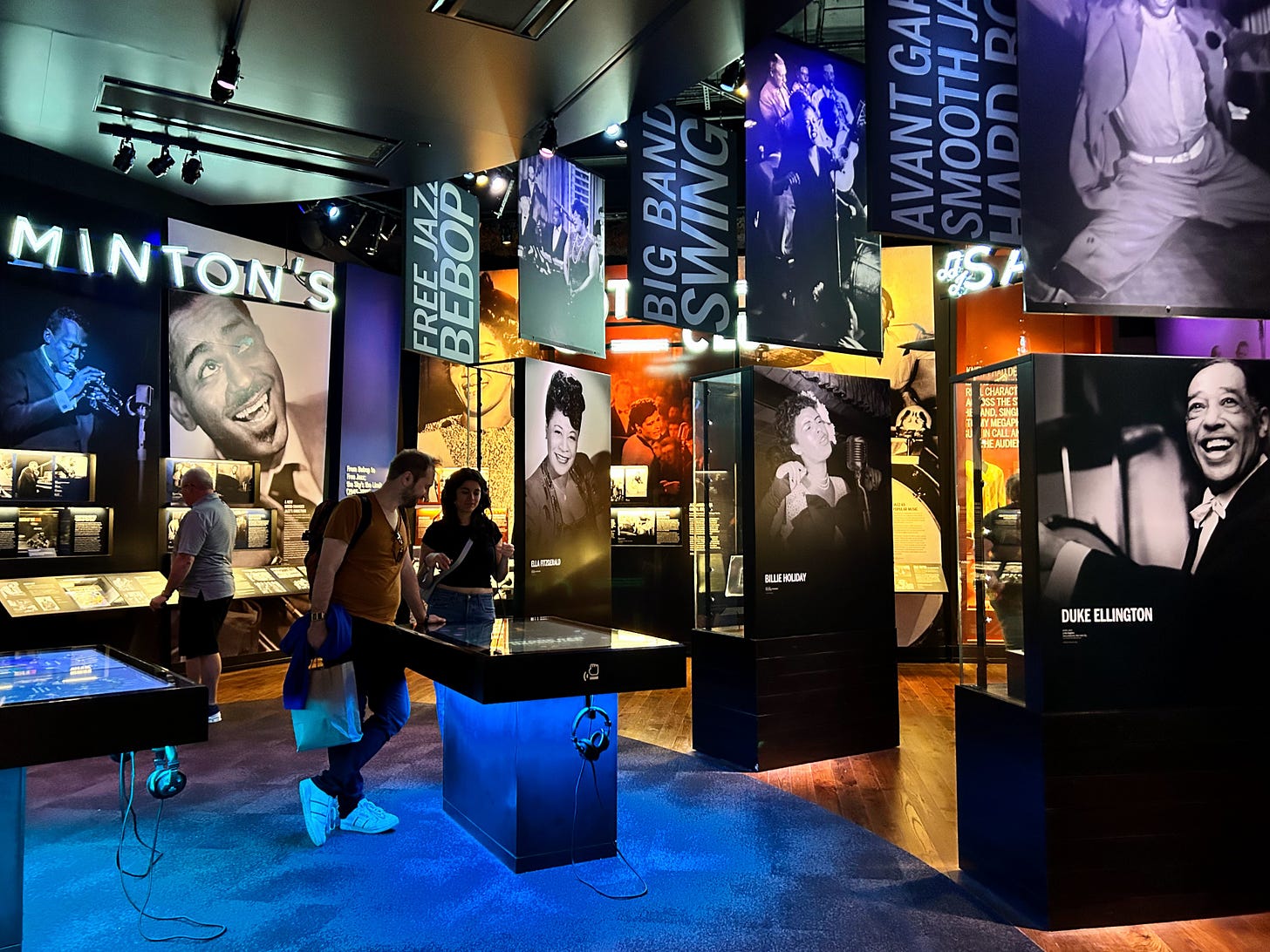
Day 1: The National Museum of African American Music (NMAAM) and Prince’s Hot Chicken
You have to start your Nashville with a visit to Prince’s Hot Chicken and the National Museum of African American Music. Trust me.
Thanks to a boom in popularity over the past decade, hot chicken has become well-known outside its original home of Nashville, where it was first served at a restaurant called Prince’s more than 100 years ago.
(Skip Hattie’s, which is run by a white family that decided to get in on the trend in 2012. In 2019, the New Yorker profiled Andre Prince Jeffries, the owner of Prince’s, who has watched many white restaurateurs capitalize off her business’s marquee product.)
Prince’s now has two locations, including one inside the three-story Assembly Food Hall that opened in 2021 and just so happens to be on the same block as NMAAM.
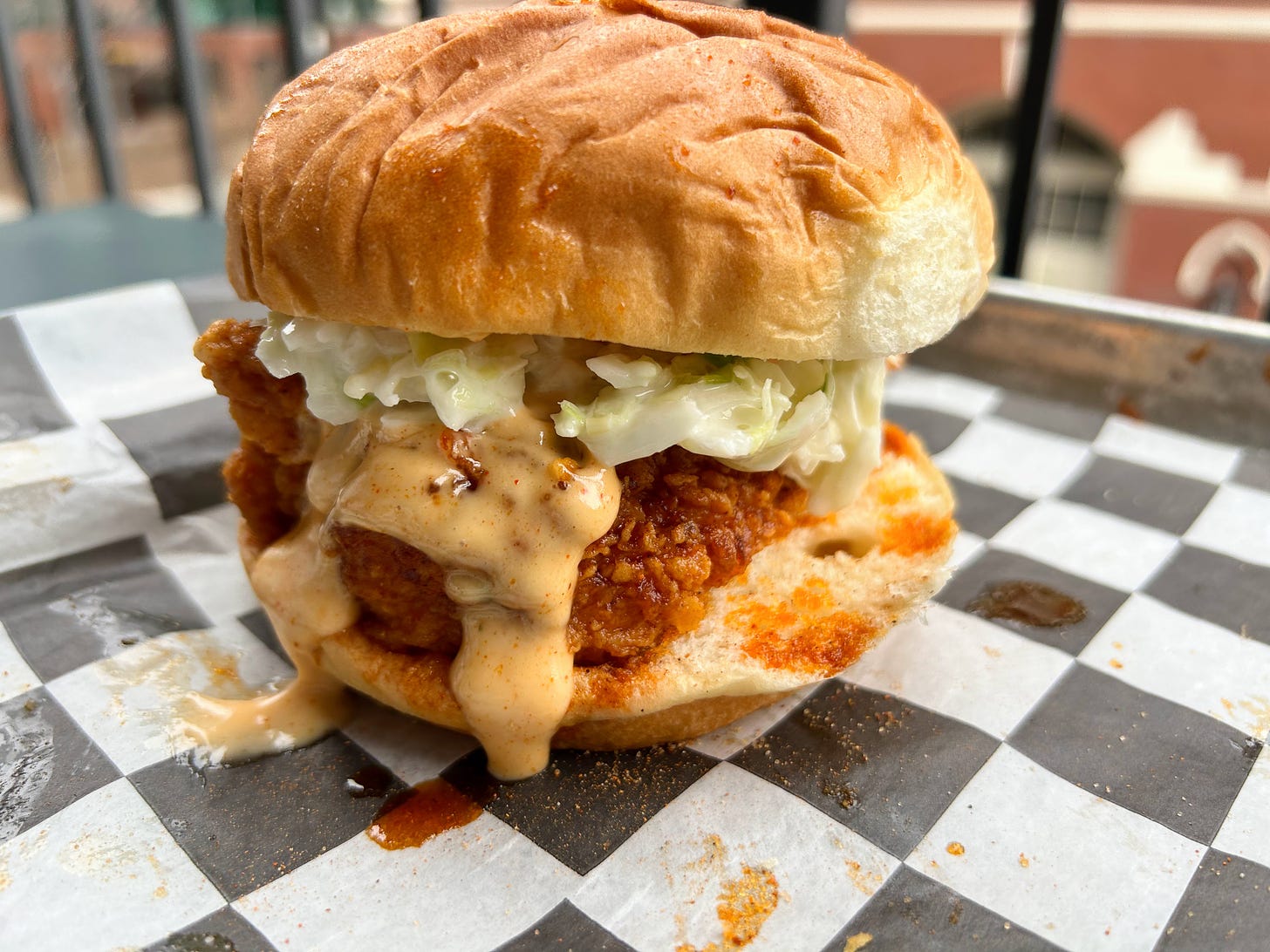
Get your sandwich — I ordered mine at a medium level of heat and it was divine — and then head to the patio overlooking the Ryman Auditorium to eat.
Then, wash the ranch sauce off your hands and head to the sweeping state-of-the-art museum that opened in 2021 and is a much-needed addition to Nashville’s tourism offerings.
The city, which is the most influential music city outside L.A., has struggled to give Black musicians their due.
That’s disappointing, considering that, by the city’s own accord, its moniker, “Music City,” came from the Fisk Jubilee Singers, an all-Black singing group that toured Europe in 1873 and had an audience with Queen Victoria, who is said to have quipped that they were so good that they must have come from a “music city.”
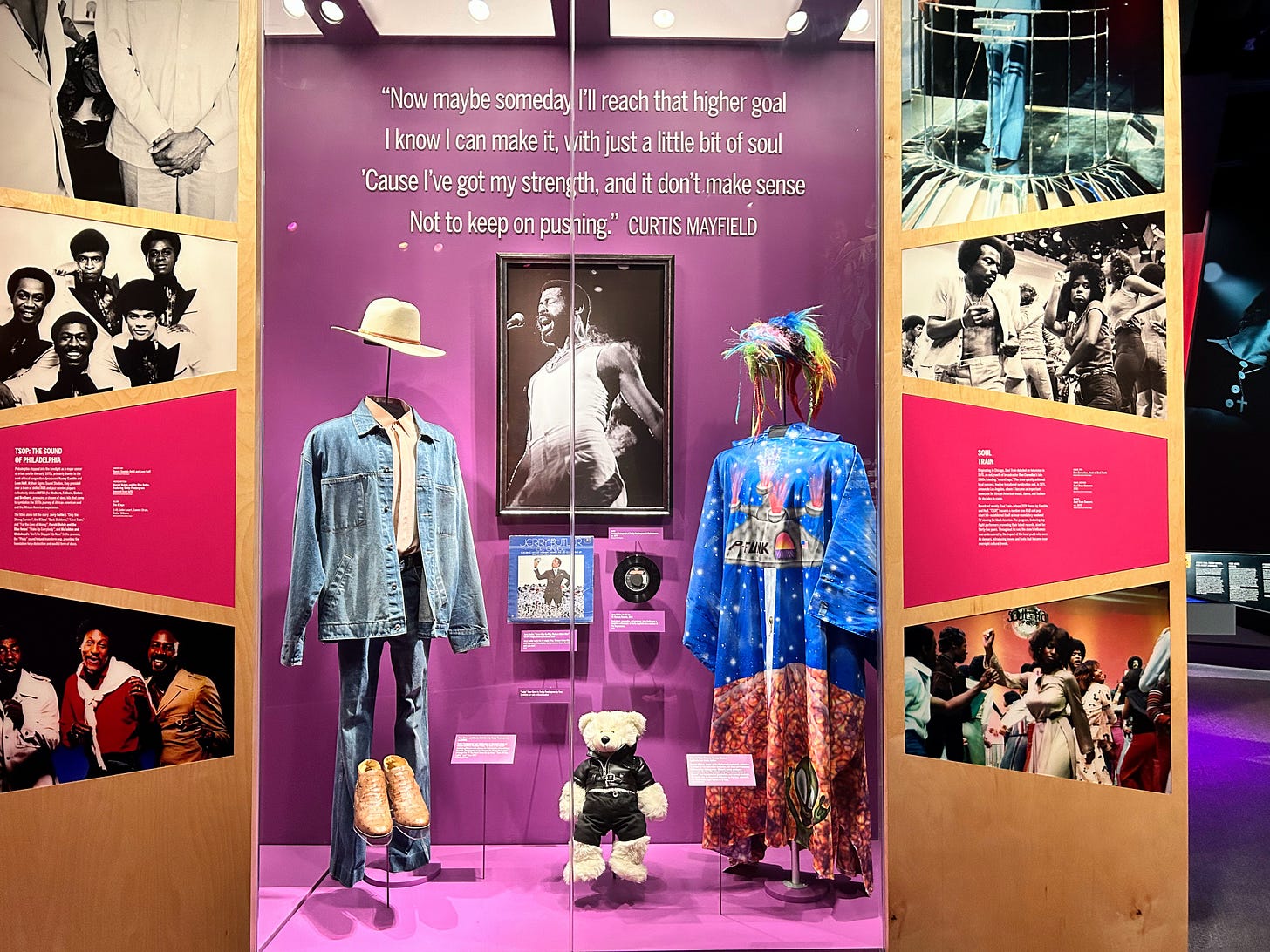
A visit to NMAAM starts with a 15-minute documentary that should be required viewing for all music lovers, everywhere, because it explains how Western and Central African cultures shaped music so far and wide during and after slavery.
Enslavers might have stripped Black men and women of everything they owned, but they couldn’t take their song.
Black musicans have shaped just about every genre we listen to today, including both old and new country music.

The physical museum space is organized by genre, starting with gospel music and spirituals and ending with hip-hop and dance. From room to room, we lingered on the panels and videos, stopping at the touchscreens to listen to samples from the artists we were learning about.
Every one of the journalists left saying, “I wish I had more time there.”
Now, that is the mark of a can’t-miss-museum.
I was paying extra attention at NMAAM because earlier in the day, we toured the Country Music Hall of Fame and Museum, which draws some 1.5 million visitors a year.
And yet it left so many questions unanswered.
I’ve become particularly sensitive to memorabilia — Vince Gill’s scuffed-up loafers, Minnie Pearl’s straw hat, Elvis’ gold-plated Cadillac — being used to whitewash the historical record. I was aghast that a museum that, less than a decade ago, doubled in size was still failing to acknowledge the Black roots of country music.
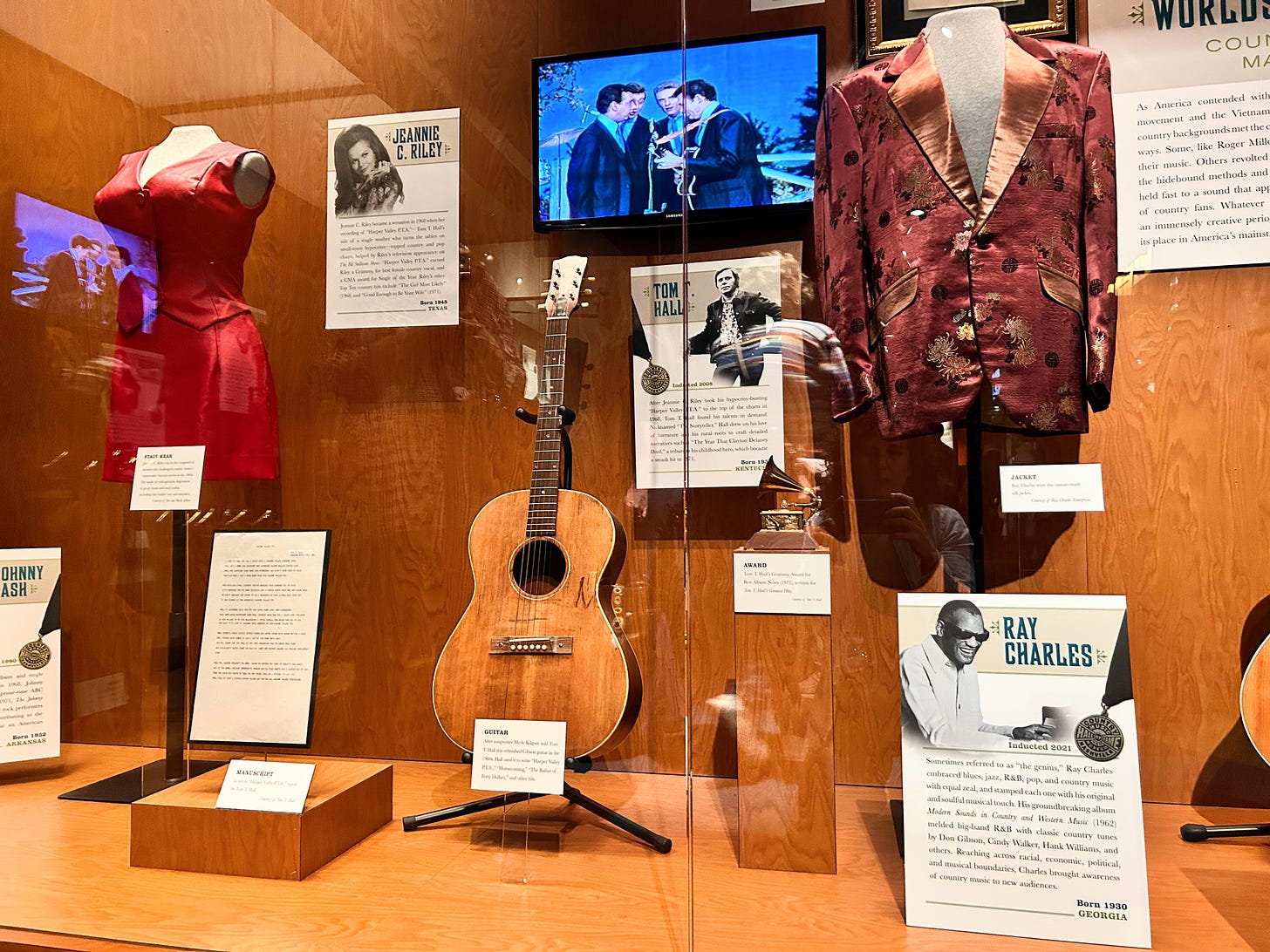
Only three Black musicians have been inducted into the Country Music Hall of Fame in its 62-year history: Charley Pride (2000), DeFord Bailey (2005), and Ray Charles (2022). That means the organization had been around for nearly 40 years before it honored its first person of color.

The lack of inclusion in the Hall of Fame and its accompanying museum is an affront to the many Black musicians, named and unnamed, whose work influenced everything we know about country music today.
I was surprised that the Grand Old Opry seemed to do a better job of honoring the history of Black musicians. (Charley Pride’s son, Dion, performed on the night of our visit, and they aired a Black History Month mini-doc during the show that was particularly moving.)
I’m not saying don’t visit the Country Music Hall of Fame, but first go somewhere where nostalgia and critical thinking can go hand in hand.
But make sure you eat a hot chicken sandwich first.
Part 2 of What to Do in Nashville, coming next week.
Thank you so much for your support of The Feminist Kitchen on Substack!
Your paid subscriptions make this independent writing project possible, and each month, I donate a portion of the proceeds to a non-profit that supports BIPOC and LGBTQIA++ organizations.
The February donation went to NMAAM, the museum featured in this week’s newsletter, and the March donation is going to the Neill-Cochran House Museum’s slave quarter project, Reckoning with the Past. I’ll explain why in next week’s post.
Have a great weekend,
Addie



